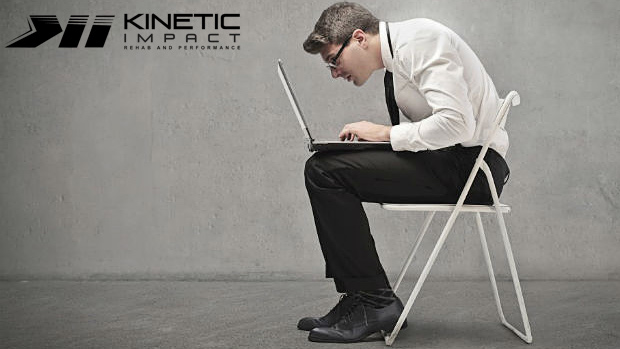BLOG
Slouching Does NOT Hurt Your Back
Learn about postural myths and how this term is a scape goat for chronic pain. We are not fragile blocks stacked on top of each other like a game of Jenga waiting to be toppled over
September 4, 2019
Dr. Donald Mull, DC

Posture, what it really means
The word posture is derived from a Latin verb ponere, which tanslates to “to put or to place”. For some reason we tend to think this word is identified with only one “correct” position or place for our bodies to “be placed” in.
This concept has been pushed on us without even knowing it, like when your mom pinches you telling you to stop slouching. She may have a point when it comes to social dynamics (you probably shouldn’t looked depressed at the dinner table) but when it comes to spine health, you are not going to break because you slouch. To help prove this point, I am going to turn to science
Let's Debunk Some Myths
According to a study in the Journal of Biomechanics, there is more load placed on the spine when sitting in a full upright position vs. a relaxed position. They were able to measure these loads with an internal implant which was placed in the spine. In their results they found sitting on different surfaces (stool, stool with pad, chair, physioball) had little change on the amount of force placed on the back. However, sitting upright increased the amount of force on the back compared to sitting in a relaxed position.
This is also true of the dreaded “text neck” that floods our Facebook feed with ominous titles (great click bait though). According to a study done at Oxford, neck position had no correlation with future neck pain. So look down at your phone or your keyboard all you want, it is NOT going to break your neck.
Just to clear the air, I am not saying posture NEVER matters. All I am saying is we have placed far too much emphasis on the importance of posture. There are times when posture plays an important role in safety and health of the body. I believe posture becomes of greater importance when lifting heavy stuff, doing something really fast, when there is presence of an injury or lasting pain, or when doing something for a long duration (yes, this includes sitting).
So... What To Do?
I often tell people sitting can cause some overuse discomfort just like athletes get overuse injuries from doing too much of the same thing without breaks. What’s the solution for overuse injuries? In a general sense, it is taking a break from what is causing the symptoms and replacing it with something else.
So why does your back/neck hurt after sitting for a long period of time? It may be due to the lack of movement altogether, not the position you put yourself in. Here are some tips that can help you avoid the “overuse” pain caused by sitting.
- Take a break. We like to implement the concept of “microbreaks” to our patients. Every 40 minutes or so get up and take a 1-2 minute break. According to a study done at the university of Illinois (https://news.illinois.edu/view/6367/205427), the brain’s attention to detail drops after a long period of focusing on a single objective, decreasing our attention span and hindering performance. But even brief diversions ("micro-breaks"), significantly increases one’s overall focus on that task for prolonged periods of time.
- Just Move. Try these easy movement during your break. These are some easy movements to try to break the monotony and fight the overuse as a desk athlete.
Glute Bridge
Glute Bridge from Kinetic Impact on Vimeo.
**Start lying on your back, push your waist band to the ceiling (drive your heels into the ground). Do 10-20 repetitions to get the blood pumping.
Kick-Backs/Modified Bird-Dog
**Start on your knees and forearms. Find your neutral (helps to extend, flex then find the happy medium). Keep the knee bent and reach your heel to the ceiling (try to stamp the heel of your shoe to the sky). Again 10-20 reps to oil-up the joints.
Cat/Camel
**Start on your hands and knees (hands below shoulders, knee below hips). Flex and extend the spine (find a nice, continuous flow of about 10-20 reps). SIDE NOTE: you can also do this movement right at your work desk in your chair if you are unable to get up out of your chair.
Want More?
- This guide will teach you simple guidelines on staying active while keeping your back as safe as possible!
When It Is All Said and Done...
Our bodies are far more resilient than we often believe. We often forget we have evolved to overcome many different stressors/loads placed on our bodies. Seek the tools that will make you more resilient so you can put your health into your own hands! If you would like to learn more about how we do this click here, for more blog info click here.
Related Posts
What to Expect from a Visit to Kinetic Impact
What You Can Expect... At Kinetic Impact our focus is on keeping our clients active and pain free. Our holistic approach comb...
Read more
Why Your Mid-back is Killing Your Golf Game
What is the “Thoracic” spine? The thoracic spine is simply the mid-back located in-between your shoulder blades. It is the p...
Read more
5 Tips to Ditch Your Back Pain
Who is this info for? This information will be valuable for you if you can relate to the following: You have been told you ...
Read more
Search the Blog